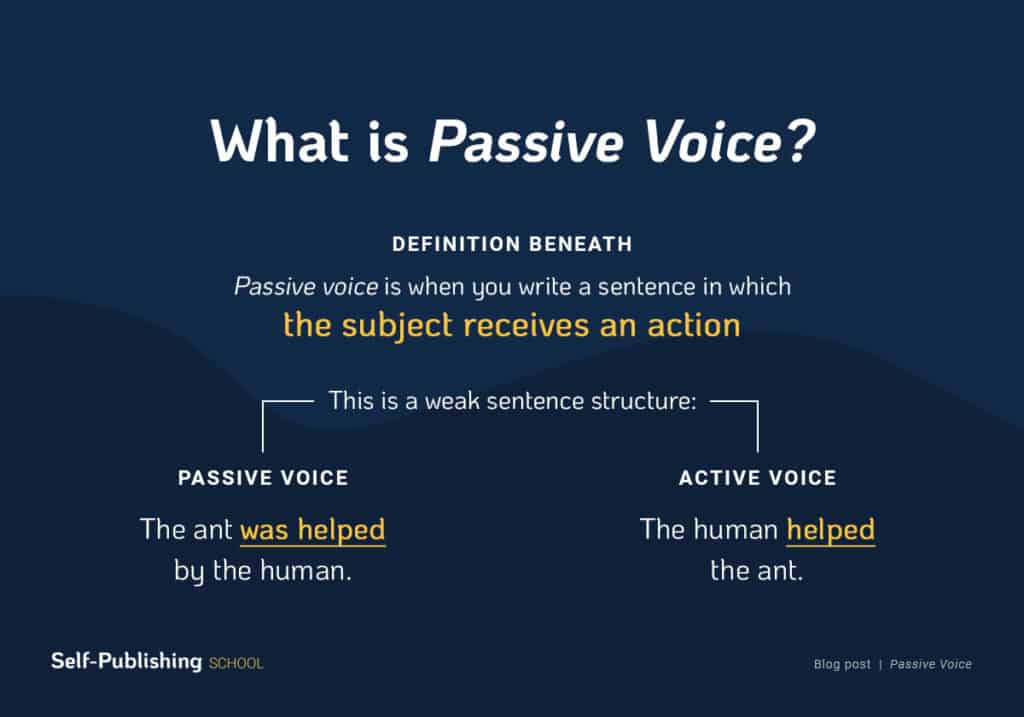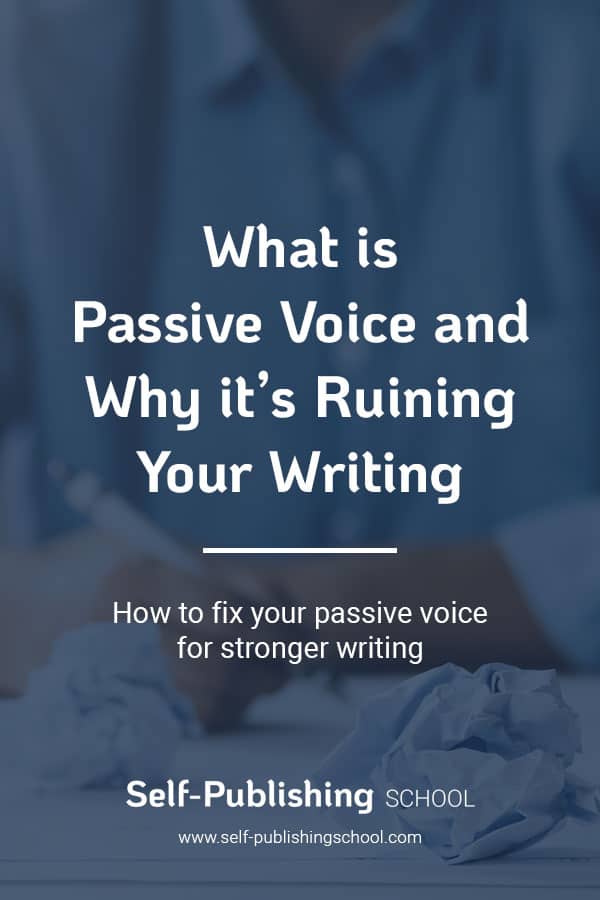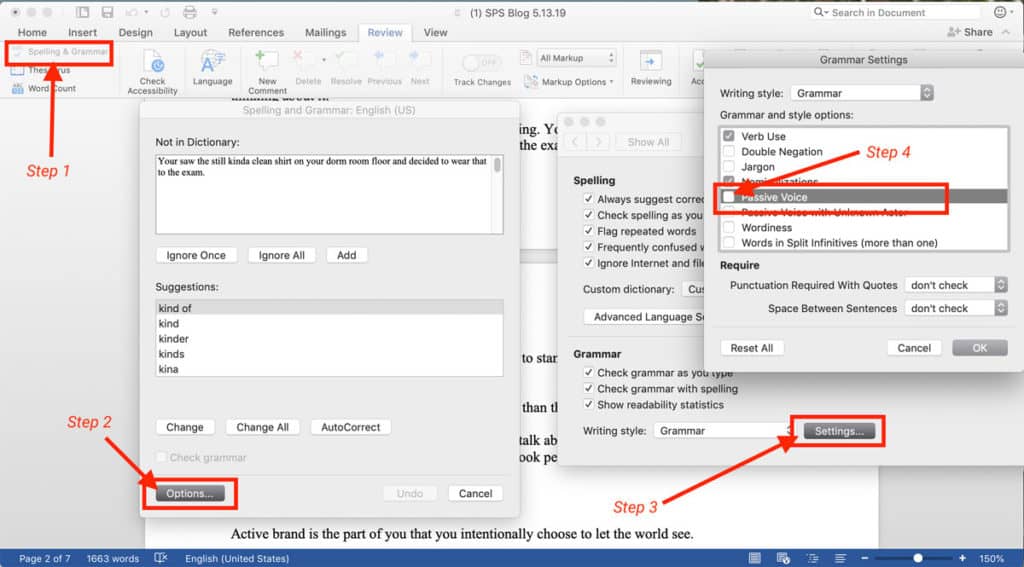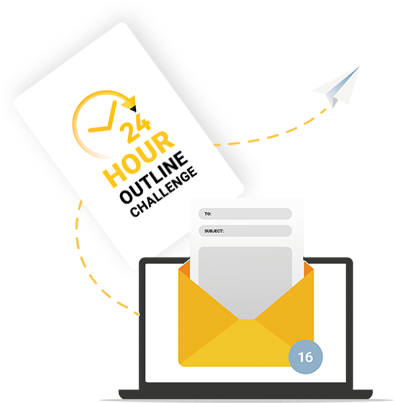Passive voice has its purposes. It really does. In fact, it can be the politically correct way to phrase something.
Imagine…
The setting: a public school library
The players: a librarian (OK, I’m the librarian) and 15 first graders
The scene: The librarian is reading aloud nonfiction books about sharks.
The question: “Why do sharks _______________?” (some intriguing behavior too complex or gory for me to explain or possibly even understand)
The passive voice answer that keeps me employed in a public school: “That’s the way they were made.”
The active voice answer that I would tell my grandchildren: “God made them that way.”
Here’s what you’ll learn about passive voice:
- What is passive voice?
- How much passive voice can you use?
- How to choose to use passive or active voice
- Active voice examples
- How to vary your sentence variety
- How to find your percent of passive voice
What is passive voice?
Passive voice is when you write a sentence in which the subject receives an action. For example, “The ant was helped by the human.” is passive voice because the subject (ant) receives an action (help). The active voice of this sentence is, “The human helped the ant.”
Typically, passive voice is seen as weak when writing a book and in most cases, this is true. However, passive voice can serve its own purpose in writing.
One instance to use passive voice intentionally is when you don’t know (or care) WHO created the action.
It was so long ago, so obscure, so common, or so…something that the point is not on the subject performing an action; the focus is on the result.
Most of the time, though, active voice is the way to go. It’s more direct (less wordy) and commands more interest. You use strong verbs in active voice, so the entire sentence is (usually) stronger.
Active voice sentences are easier to understand.

How much passive voice can you use?
The English language has melded far too many linguistic influences to have any absolute rules.
Therefore, the frequency of using passive voice versus active voice is a judgment call on how you would like to balance out your active and passive sentences, particularly when you can actually use passive voice intentionally as a literary device.
The key is to understand the difference between the two.
How to Choose Between Using Passive Voice or Active Voice
In general, active voice is preferred. Below is an explanation that I used with English students.
Active voice shows direct ACTION; passive voice is more ho-hum and wordy with unnecessary prepositional phrases.
The passive verb usually needs helping verbs. Sometimes it even sounds stilted.
Active voice has movers and shakers; passive voice is like being a couch potato. Do you want to be the one DOING the action or be passive? Be an active leader, not a follower! Start with the main subject and go from there.
Passive Voice Examples:
ACTIVE: I love reading.
PASSIVE: Reading is loved by me.
ACTIVE: AC/DC Thunder won the game easily.
PASSIVE: The game was won easily by AC/DC Thunder.
With students, the focus is on active voice; with a professional writer like yourself, you will most likely have a blend of both active and passive sentences, but active should still far outweigh passive.
Active VS Passive Voice with Examples
From Billboard’s “The Biggest Hits of All: The Hot 100’s All-Time Top 100 Songs” I selected songs that used active voice in their titles. (WHO selected them? I selected them. That’s another easy example of active voice.)
Here are song titles along with a rewrite in passive voice:
- “I Love Rock ‘N Roll” * Rock ‘N Roll Is Loved by Me
- “I Gotta Feeling” * A Feeling Was Gotten by Me
- “You Light Up My Life” * My Life Was Lit Up by You”
- “We Found Love” * Love Was Found by Us
- “I Want to Hold Your Hand” * Your Hand Is What I Want to Hold
- “Another One Bites the Dust” * The Dust Was Bitten by Another One
- “I Will Always Love You” * You Will Always Be Loved by Me
- “I Heard It Through the Grapevine” * It Was Heard Through the Grapevine by Me
Sentences with the understood subject (you) have an imperative active voice which is much more authoritative than passive tense:
- (You)” Un-Break My Heart” * My Heart Should Be Unbroken by You
- (You) “Tie a Yellow Ribbon Round the Ole Oak Tree” * A Yellow Ribbon Should Be Tied Round the Ole Oak Tree by You
- (You) “Let the Sunshine In” * The Sunshine Should Be Let In by You
- (You) “Play That Funky Music” * That Funky Music Should Be Played by You
Conversely, this next song title has a passive voice that works: “That’s What Friends Are For” (better than Friends Are for That).
With the rewrites changing active voice to passive, did you discern a pattern where many of them ended with a prepositional phrase containing the person doing the action?
Think of gossip.
People want to know who is doing what! (They really did that? You’re kidding!) Put the subject right at the beginning so everyone knows whom you’re talking (writing) about and what they did!
How to Vary Your Sentence Variety Using Passive Voice and Active Voice
If you have the same subject over and over and if the object is more of the point anyway, passive voice allows for sentence variety.
Furthermore, if it doesn’t matter who did the action because the result is the point, passive voice works.

The chairs in the old high school library were refinished and moved to the new library weeks before the tables were moved. Temporary chairs were in the high school library.
I needed the tables from the old elementary library to sort the genre boxes, so students had chairs, but no tables for a while. The elementary students enjoyed sitting at the “invisible” tables and joked how they didn’t have to push in their chairs when they left.
After class, a first grader told his teacher very sincerely, “The tables really are invisible!”
I smile whenever I think of his endearing comment.
Passive voice rationale: It didn’t matter who had refinished and moved the chairs or who had put temporary chairs in the high school library. I hadn’t done those things, and those details would not have added to the book.
Nonetheless, I had completed the genrefication project (where the library was totally reorganized by book genres). I didn’t want to start almost every sentence with “I + action verb + direct object.” It would sound awkward to repeatedly start sentences with “I did this, I did that, I, I, I….”
Passive Voice Checker & How to Determine Your Percent of Passive Voice
Beyond the basic spelling and grammar check (which can be helpful with tools like Grammarly or even Hemingway Editor) is Word’s readability feature.
It tells you various details about your writing, including the percentage of passive sentences, the Flesch Reading Ease, and the Flesch-Kincaid Grade Level.
For example, the segment about the chairs and the invisible tables scored an 8.8 Flesh-Kincaid Grade Level, which means it was written at a reading level where an 8th grader in the 8th month of school should be able to comprehend the text.
Many teen and adult fiction books are written at 4th – 6th-grade reading levels (based on Accelerated Reader scoring) because the writing flows at those levels for recreational reading compared to reading to learn new information. Newspapers may rank more at a 10th-grade reading level, depending on the complexity of the information.
If you are using Word and would like to know your percentage of passive sentences and readability scores, here’s what you do:
- Go to Review at the top of Word.
- Select Spelling & Grammar from the top left.
- Select Options… from the pop-up.
- Select Settings… at the bottom of the next pop up (next to Writing style:)
- Then scroll down until you see Passive Voice and check the box
- Select “OK” and you’ll now be able to check your passive voice in Word

In case you were wondering (and even if you weren’t), this article was written at a 6.7 reading level with 6% sentences being passive.
Now check some of your writing and see if you agree with your results.
By the way, I just took my own advice here and checked my children’s picture book, The Flower Fairies Meet the Talking Rainbow Rocks. It contains 4% passive sentences (acceptable to me) but has a 4.1 reading level, which is higher than I would have guessed and higher than I had planned for a picture book.
My book’s science-related terms increased the reading level. Word’s readability tool actively helps with various writing considerations beyond passive voice. You may use it purely for passive voice, but it will tell you even more.
Active writing is lively writing. It is aggressive in the most positive sense. It burrows in there and zooms straight to the point.
Stay active with your writing, and stay active in your writing.



